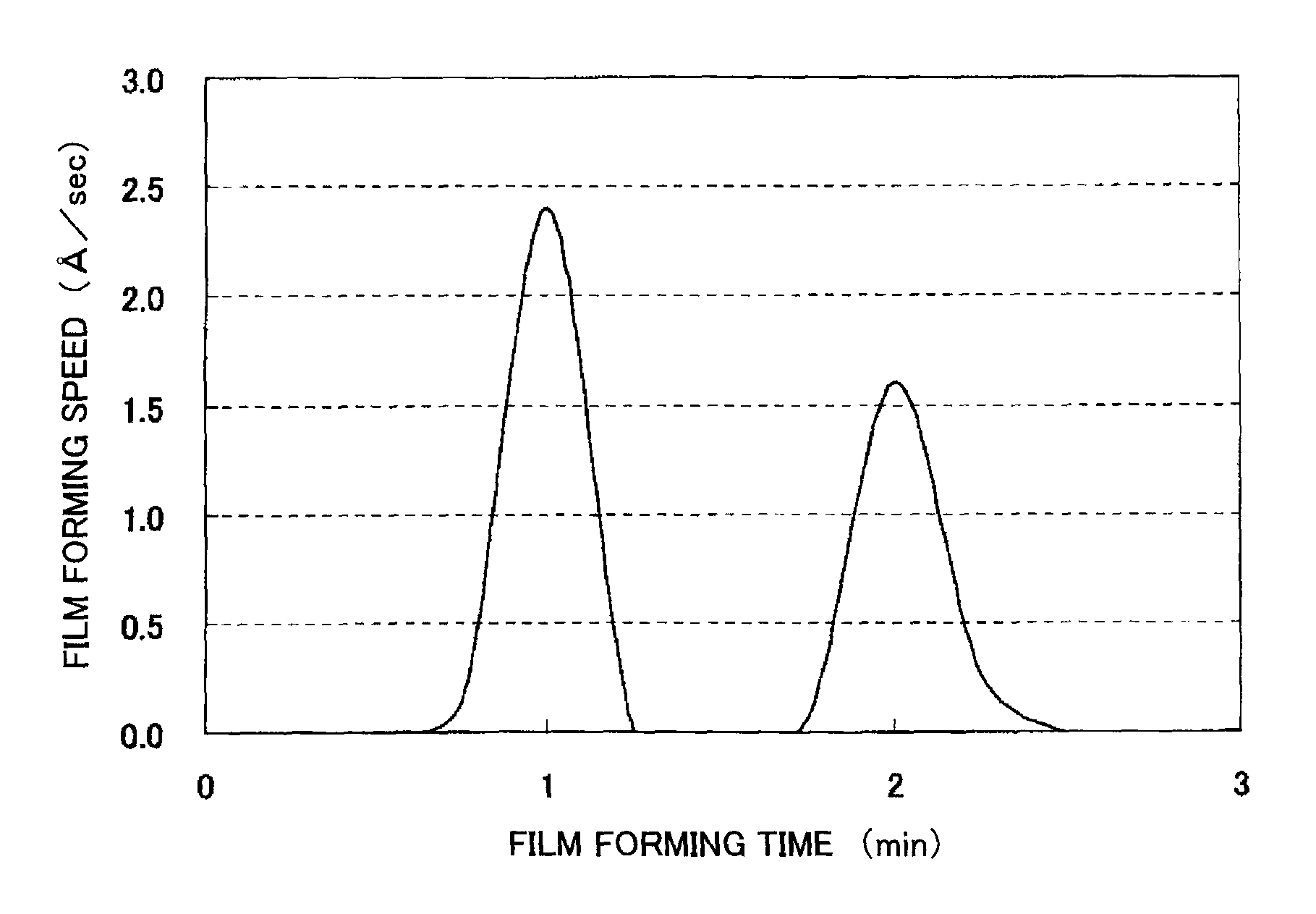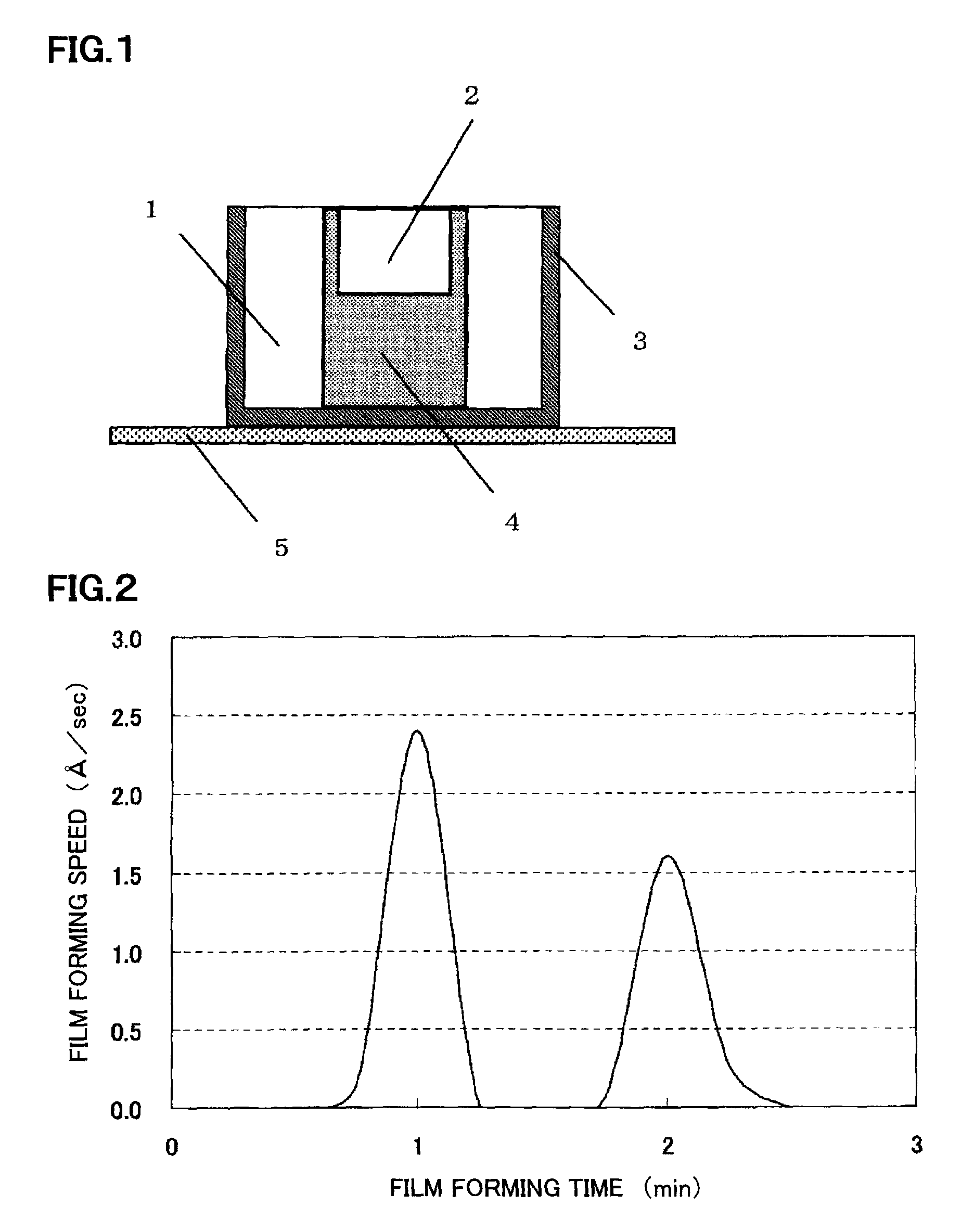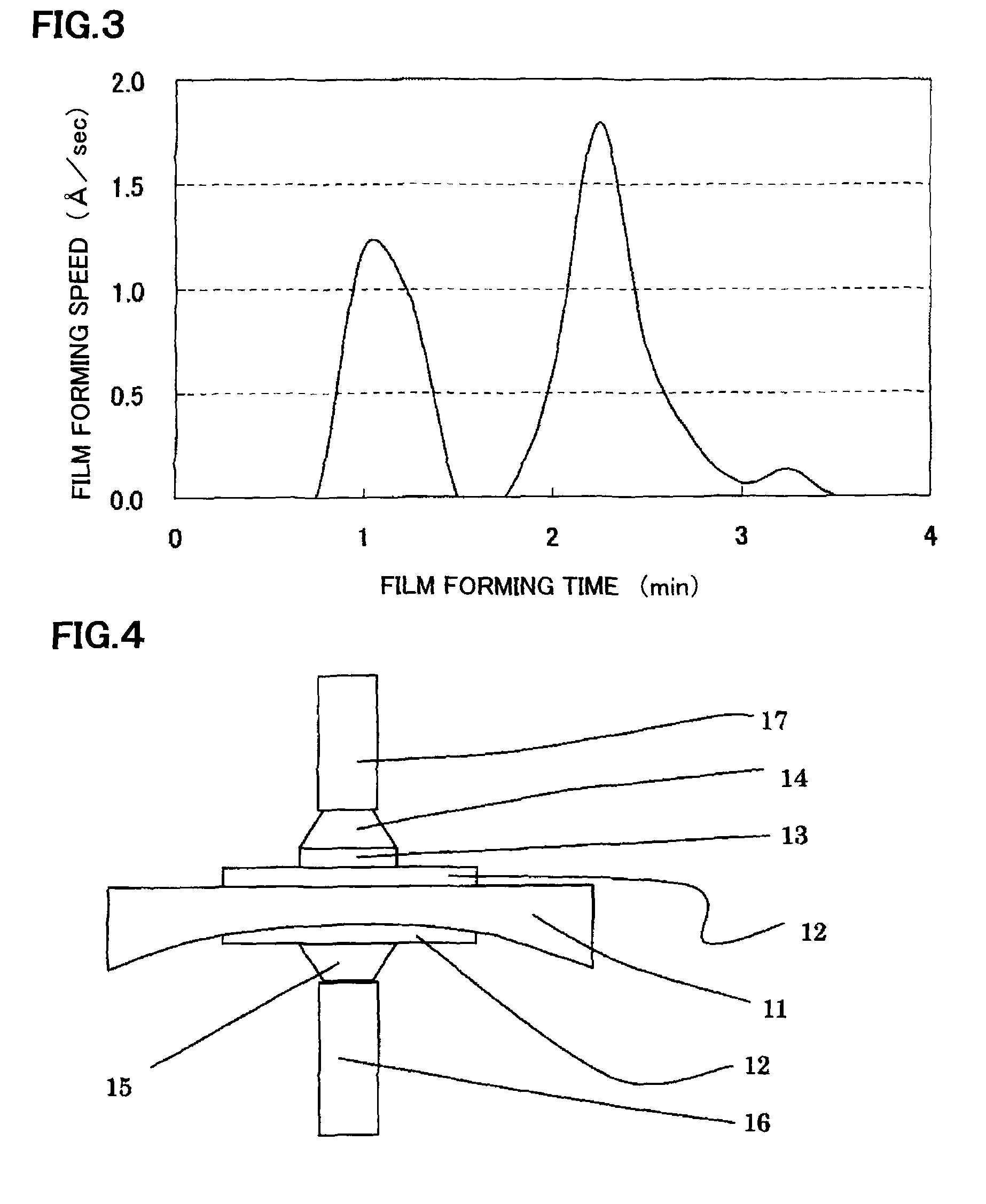Spectacle lens and method for producing the same
a technology of spectacle lens and lens surface, which is applied in the field of spectacle lens, can solve the problems of spectacle lens slipperiness and water reduction, and the level of satisfactory level of spectacle lens is still far from always achieved, so as to reduce the slipperiness of the spectacle lens surface, the effect of reducing the slipperiness of the spectacle lens, and low dynamic friction coefficien
- Summary
- Abstract
- Description
- Claims
- Application Information
AI Technical Summary
Benefits of technology
Problems solved by technology
Method used
Image
Examples
example 1
(1) Production of Anti-Reflection Film-Attached Lens
[0102]First, a plastic lens for spectacle was prepared as a lens base member, the plastic lens having a refractive index of 1.67, a spherical power (S degree) of −6.00 diopter, a cylindrical power (C degree) of −2.00 diopter, and an outer diameter of 80 mm. Then, a silicon-based hard coat layer having a refractive index of 1.67 was formed on the surface of the lens base member. Then, a multi-layered anti-reflection film was formed on the surface of the silicon-based hard coat layer by a vacuum deposition method to thereby obtain an anti-reflection film-attached lens. Note that the constitution of the multi-layered anti-reflection film was a five-layered film constitution, that is, SiO2 / ZrO2 / SiO2 layers having a total optical thickness of λ / 4; a ZrO2 layer having a film thickness of λ / 4; and a SiO2 layer having a film thickness of λ / 4 (where λ=500 nm) stacked in this sequence from the lens base member.
(2) Formation of Water-and-Oil ...
example 2
[0106]A spectacle lens was obtained in a similar manner to Example 1, except that a mixture of 0.15 ml of OPTOOL AES4 (manufactured by DAIKIN INDUSTRIES, LTD.) and 0.1 ml of KY-130 (manufactured by Shin-Etsu Chemical Co., Ltd.) was used as the raw material of a first layer of a water-and-oil repellent layer instead of 0.25 ml of OPTOOL AES4 (manufactured by DAIKIN INDUSTRIES, LTD.). Note that the thicknesses of the first layer and a second layer of the water-and-oil repellent layer were measured by the same method as that in Example 1.
example 3
[0107]First, 995 g of a fluorinated solvent (manufactured by Sumitomo 3M Limited, product name “Novec HFE-7200”) was taken into a beaker. Then, 2.5 g of OPTOOL AES4 (manufactured by DAIKIN INDUSTRIES, LTD.) and 2.5 g of KY-130 (manufactured by Shin-Etsu Chemical Co., Ltd.) were introduced into the beaker and dissolved to obtain a solution having a water-and-oil repellent concentration of 0.1% by mass. Subsequently, an anti-reflection film-attached lens obtained by the same method as that in Example 1 was dipped into the solution for 10 seconds, thereafter pulled out from there at a speed of 8 mm / sec, and heated at 50° C. for one hour. Thereby, a water-and-oil repellent layer was stabilized, and a spectacle lens was obtained. Note that, as the thickness of the water-and-oil repellent layer, the film thickness of a sample was measured using ellipsometer MARY-102 (manufactured by FiveLab Co., Ltd.), the sample being obtained by forming a water-and-oil repellent layer on the surface of ...
PUM
| Property | Measurement | Unit |
|---|---|---|
| thickness | aaaaa | aaaaa |
| contact angle | aaaaa | aaaaa |
| contact angle | aaaaa | aaaaa |
Abstract
Description
Claims
Application Information
 Login to View More
Login to View More - R&D
- Intellectual Property
- Life Sciences
- Materials
- Tech Scout
- Unparalleled Data Quality
- Higher Quality Content
- 60% Fewer Hallucinations
Browse by: Latest US Patents, China's latest patents, Technical Efficacy Thesaurus, Application Domain, Technology Topic, Popular Technical Reports.
© 2025 PatSnap. All rights reserved.Legal|Privacy policy|Modern Slavery Act Transparency Statement|Sitemap|About US| Contact US: help@patsnap.com



